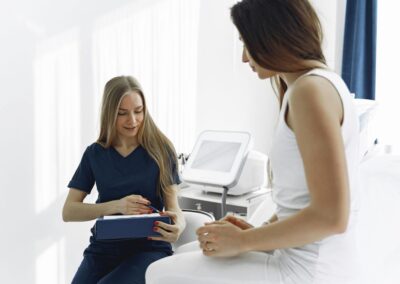The wearing of surgical scrubs has become part of the hospital culture. Initially intended to reduce the risk of infection and contamination in the operating room environment, their use has expanded far beyond that. Everywhere one goes in the hospital and the clinics, one sees more and more health care personnel attired in scrubs. And they wear them all around the hospital, the grounds and even in the coffee house down the street.
In addition, surgical scrubs are darned comfortable. They are easily replaceable if they get stained with body fluids or otherwise damaged during the course of the day. And you don’t wear out your own clothes. No wonder everyone wants to wear them.
Back in my day, scrubs were worn almost exclusively by physicians and operating room personnel… and only in the designated operating room areas. I remember some of my colleagues in medical school (especially the single ones) wanting to wear the scrubs outside of the hospital so that they would be identified to the public as physicians! Wearing scrubs was a status symbol. To some degree this has not changed. The other day, I was walking down a hospital corridor with a drug rep. He was wearing surgical scrubs and I had on a dress shirt and tie. A nurse walked by us, looked at us both and then respectfully turned to the rep saying, “Good morning, doctor!”. I was put in my place and we both chuckled.
I get the idea of infection control, and I also respect the comfort and convenience of wearing surgical scrubs, but are we truly accomplishing what was intended by their use?
We have made some real advances with infection control in the hospital setting, particularly in the area of better hand washing technique. Earlier this month the Board of the American College of Surgeons made recommendations on the appropriate surgical attire that will be published October 2016 in the Bulletin of the American College of Surgeons. These recommendations are very good.
But are they going far enough? For example, it was appropriately recommended that surgical scrubs should not be worn at any time outside of the hospital perimeter. That sounds OK at first blush but let’s look at the reality…..
Even if the health care worker complies and stays within the “hospital perimeter”, will that accomplish the goal of infection reduction in any meaningful fashion. For example, it is not at all unusual for the operating scrub nurse to go to the lounge in between cases, into a totally non-sterile environment. Then that person may go to the patient waiting room or cafeteria where one is in total contact with the unrestricted public, some of them sick and potentially contagious. And then that person can go right back into the operating room and be within inches of the sterile field. This process may be repeated many times during the course of the day. In these cases, which are commonplace, how protective is the apparel ?
And how about the non-caregiver that wears scrubs. As I mentioned earlier, the person wearing the scrubs may be a device rep and not even an employee of the hospital. And they can come and go wherever they want whenever they want as long as they sign in. Many of them simply wear scrubs from home and may visit multiple hospitals that day. Policies intended for employees and medical staff are much harder to enforce with this group.
So I realize the convenience of wearing scrubs for any health care worker. I realize the intent to reduce infection. Furthermore, I understand the impracticality of the person to have to change scrubs every time one leaves the immediate operating room area.
These ACS guidelines are a great clarification of many different hospital policies involving operating room attire. They are well written and I applaud their efforts. But with the wearing of scrubs are we just kidding ourselves?
Just as when someone breaks the sterile field, that person needs to prep again, should we not adopt some similar posture with operating room attire, particularly when that person can within policy go anywhere in the hospital and then be so close to the actual sterile fields?
These guidelines have not addressed that issue. It will be debated for a while. We have not seen the end of this one… But if we do, let’s next talk about stethoscopes and whether they are ever cleaned between patients.




